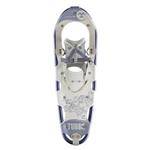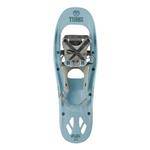Experiencing all that the snowy slopes has to offer can come in many forms. Rather than being considered a ‘sport’ per se, snowshoeing is a great way for one to experience all that the snowy outdoors has to offer via hiking/walking atop a pair of specialty shoes. Modern day snowshoeing runs the gamut of casual snowshoers who hike trails for pleasure, snowshoeing enthusiasts who trek through the backcountry, and competitors who race. Indeed, snowshoeing is a great alternative sport for those who want to enjoy many of the qualities of hiking, exploring, and enjoying winter weather.
Ensuring that you’re prepared for your snowshoeing trip is essential, and reviewing our checklist can help to ensure that you’ve packed your items accordingly. Keep in mind that those who are packing their snowshoes along as a side-excursion to their camping or hiking trip will also want to review those appropriate checklists as well to ensure they’ve stocked the essential gear for all aspects of their journey.
Click here to download a printable PDF shopping list.
Snowshoeing Essentials
Whether you’re opting for a casual day on the snow or gearing up for a multi-day tour of adventure on uncharted mountainsides, you’ll need to ensure that you’ve packed these essentials for your snowshoeing trip. Always check the integrity of your gear before hitting the trails to save for unnecessary accidents and annoying malfunctions.
Item | Why You Need It |
Keep Boots Atop Snow | |
Boots | Insulation; Connection Point to Snowshoes |
Adding Traction to Help with Mobility | |
Basic Snowshoeing Gear
In addition to the bare minimum, many of these accessories are also necessary for a safe and enjoyable snowshoeing excursion. Your choice in gear can drastically impact your comfort and safety while out on the slopes, so review this checklist and pack accordingly.
Item | Why You Need It |
Snowshoe Repair Item | |
Snowshoe Repair Item | |
Snowshoe Repair Item | |
Repair Essentials Stored in One Kit | |
Move Snow for Fire Pits, Emergency Rescue | |
Test Snow Depths/Avalanche Risks | |
Test Slope Measurements | |
Track Fitness, Progress, Location | |
Added Mobility/Traction on Snow and Ice | |
Keeps Lips Hydrated | |
Essential Tool | |
Keep Extremities Warm in Cool Conditions | |
Energy Food/Snacks | |
Light Source and Energy Source | |
Communication with Traveling Partners | |
Insulated Sitting Pad | Insulated Seating Option for Breaks |
Navigational Tools | |
Portable Energy Source | |
Shows Risk for Avalanche |
Clothing
The attire you choose to wear for your snowshoeing trip can make or break your experience altogether. Nowadays, many pieces of winter sports clothing and accessories are designed with user comfort and safety in mind, making for a more enjoyable experience overall. In fact, opting to forego many of the basics is simply not an option if you truly want to spend some time out on the slopes without getting frostbite or suffering other ailments.
Item | Why You Need It |
Keep Warm in Cool Conditions | |
Light Torso Protection | |
Thermal Underwear/Wicking Base Layers | |
Fleece Pants | Insulation for Legs |
Fleece Jacket or Vest | Insulation for Torso |
Waterproof, Breathable Pants | Insulation/Protection |
Keeps Your Face Warm | |
Insulation for Head | |
Insulation for Neck | |
Light Torso Insulation for Warmer Days |
First Aid/Emergency Gear
As with any outdoor activity, you’ll want to ensure that you always bring your first aid essentials along for the trip. For activities in wintry conditions, you’ll also want to stock appropriate emergency gear in case of accidents such as avalanches and falls, as one can become isolated on the slopes very easily (especially for those opting for some backcountry snowshoeing). Be sure to always inform others of where you’re headed and how long you plan to be out. Those who are simply utilizing resort slopes and other well-guarded areas can likely forego many of these first aid essentials on their persons, as they’ll have quick access to professional assistance should the need arise.
A good rule of thumb is to leave your trip itinerary with a friend as well as in your vehicle (under your car seat) in case you become disoriented, lost, or injured. In this manner, not only will your friends have your information, but emergency personnel can also have quick access to documents should they come across your vehicle.
Item | Why You Need It |
Necessary Insulation When Stranded | |
Light Fires in Survival Situations | |
Emergency Shelter | |
Signal for Help | |
Avalung/Avalanche Airbag Survival Pack | Buy Extra Time if Buried in Avalanche Snow |
Signal for Help | |
Move Victims off Slope Safely |





